Review Bacterial growth curve chart (fig 6.21)

A. bacteria do not reproduce because they are adapting to new environment = lag phase
B. Exponential growth phase - when number of cells are doubling and doubling, etc.
C. MAXIMUM Stationary phase (carrying capacity)
D. Death phase (some cells remain viable): two options
1. Crash: all cells die
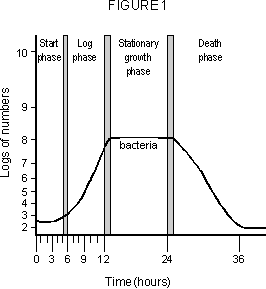
2. Minimum Stationary Stage: A few hardy cells remain
-(carriers, typhoid Mary: gall bladder colonized: no symptoms but passed to other through infected fecal matter; strep throat and removal of tonsils)

human skin cell with herpes virus (required to reproduce inside another cell)
virus infect bacteria and most of the information we know about viruses was done upon bacteria
---
Table 12. 2 families of human viruses
Fig. 13.4
size of viruses are very small
--
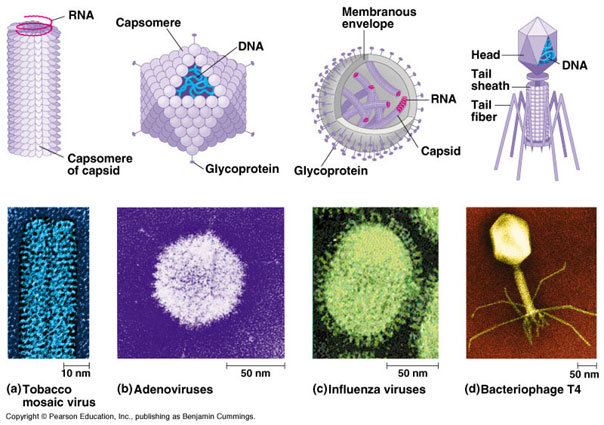
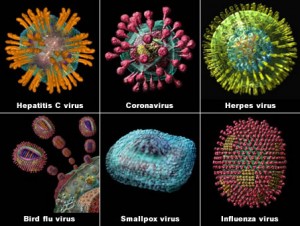
What are Viruses?
3 - Bacteriophages (phages)
- Viruses that infect bacteria
Fig. 13. 6
Standard Parts of ALL viruses:

A. bacteria do not reproduce because they are adapting to new environment = lag phase
B. Exponential growth phase - when number of cells are doubling and doubling, etc.
C. MAXIMUM Stationary phase (carrying capacity)
D. Death phase (some cells remain viable): two options
1. Crash: all cells die

2. Minimum Stationary Stage: A few hardy cells remain
-(carriers, typhoid Mary: gall bladder colonized: no symptoms but passed to other through infected fecal matter; strep throat and removal of tonsils)

Viruses and viral Anatomy
human skin cell with herpes virus (required to reproduce inside another cell)
virus infect bacteria and most of the information we know about viruses was done upon bacteria
---
Table 12. 2 families of human viruses
Fig. 13.4
size of viruses are very small
--


What are Viruses?
- Non-reproducing, non metabolizing "particles"
- Floating free = VIRION (not a virus, because it is not INSIDE a cell)
- Obligate intracellular parasites
- Eukaryotic host cells:
- 1. naked - basic (unenveloped)
- 2, Enveloped = luxury model
3 - Bacteriophages (phages)
- Viruses that infect bacteria
Fig. 13. 6
Standard Parts of ALL viruses:
- Genetic material: 4 options
- single stranded DNA
- single stranded RNA
- Double Stranded DNA
- double stranded RNA
- Protein capsid (shell)
- composed of capsomere proteins
- Shell + genome = nucleocapsid
- Fig. 13. 1
Complex viruses: Enveloped (fig. 13.7)
- Envelope: phospholipid bilayer (membrane from last host)
- vulnerable outside body, but more protected and less likely to be recognized as foreign by immune system
- glycoprotein spikes = peplomers
- ___________or matrix (glue that holds plasid to envelope)
- Other Optional Parts:
- unique enzymes;
- Reverse transcriptase - DNA from RNA template (retroviruses) (ex: HIV)
- Protease - cuts viral protein
- Integrase- joins viral genes to host genome (ex. Herpes, HIV1)---
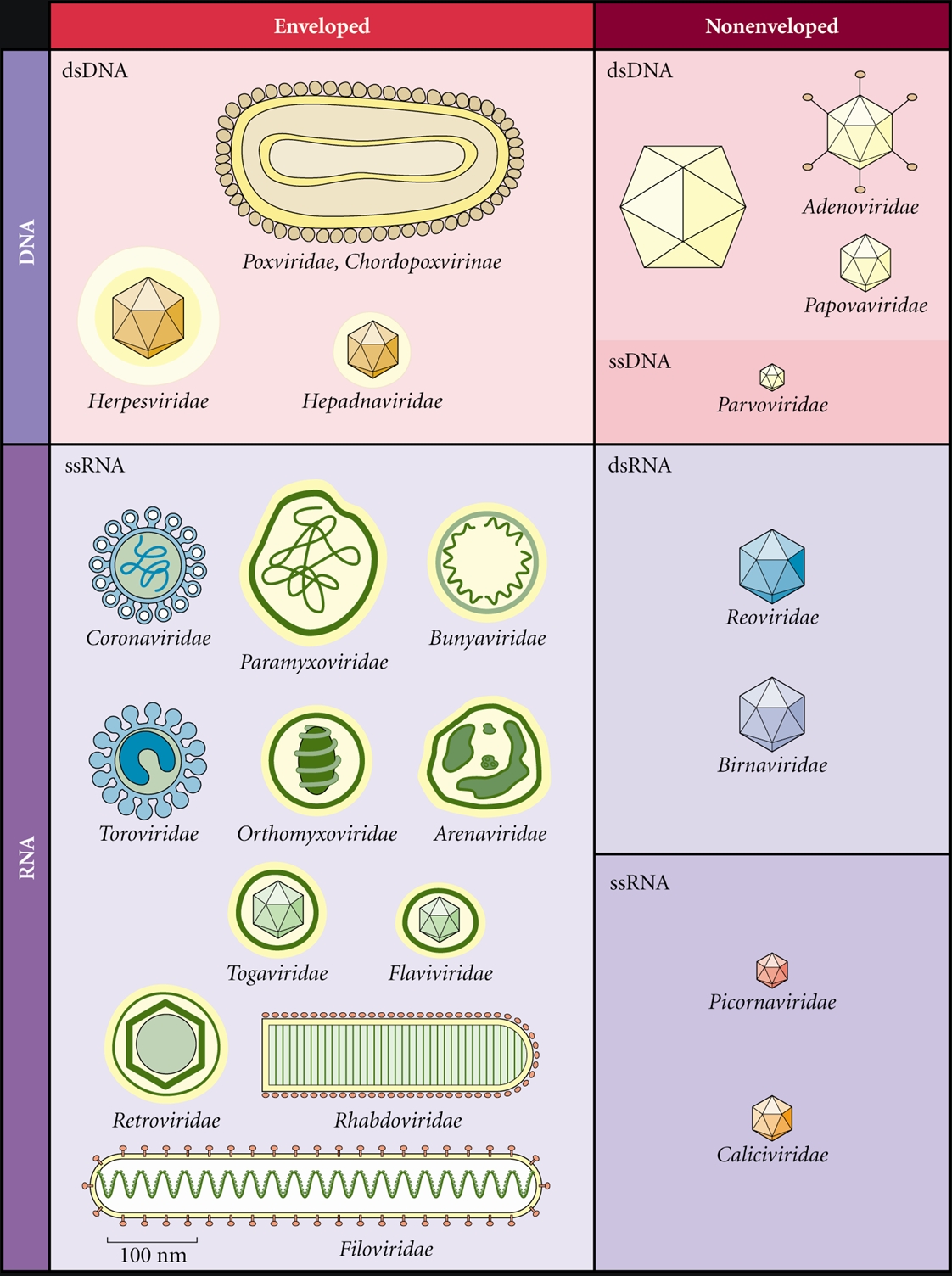
If you strip off envelope the virus is NOT a functional naked virus, its always one way or another....
Structure of AIDS Virus (fig 25. 16)
- Peplomers
- matrix
- capsid
- genome
- enzymes
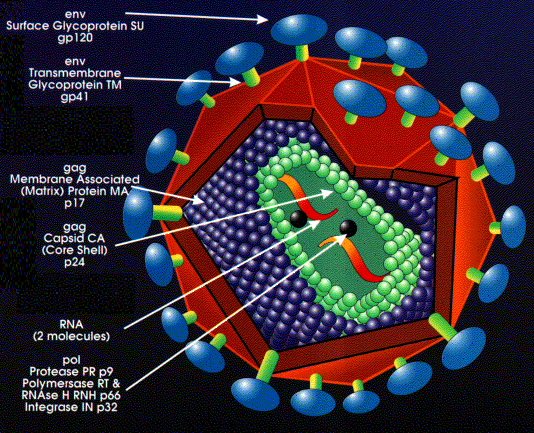
Bacteriophage: Complex capsid divided into: Fig. 13.6
* complex capsid:
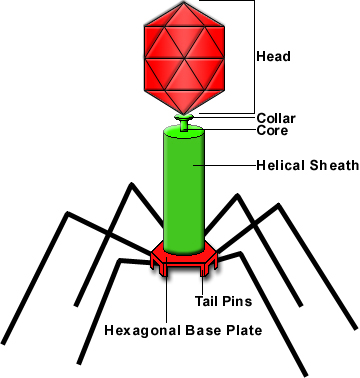
- head
- tail
- tail fibers on baseplate
- unique enzyme- lysozyme on baseplate: digest peptidogycan

Viral Replication:
If use Lytic cycle – called VIRULENT
virus: immediate
If use Lysogenic cycle – called Temperate
virus: may be delayed
Chicken pox vaccine: live attenuated virus might cause shingles?
Chicken pox vaccine: live attenuated virus might cause shingles?

******


Lytic life cycle: Fig. 13.8
Step 1: Attachment / Adhesion
Receptor proteins on host
cell surface (specificity)
virus binds by ligand proteins:
Phage:tail fibers
Naked:capsomeres
Enveloped:peplomers
*drug target: attachment antagonists
********* group activity*********
* Label diagram:
A. peplomer
B. envelope (made from a cell membrane)
C. capsid
d. Capsomeres
e. genome
* cde = nucleocapsid
* which of the lettered parts would b the ligand for the host cell surface proteins? A = peplomer
* not transmitted to water because enveloped so vulnerable outside body
****** print out sheet for after exam*****
No comments:
Post a Comment